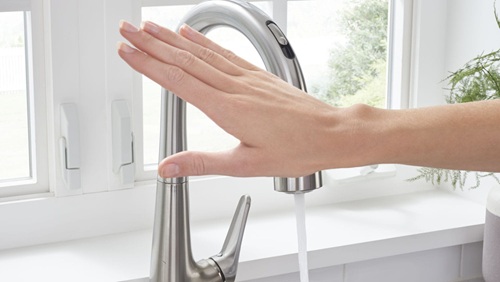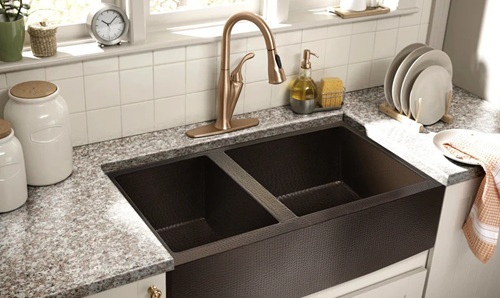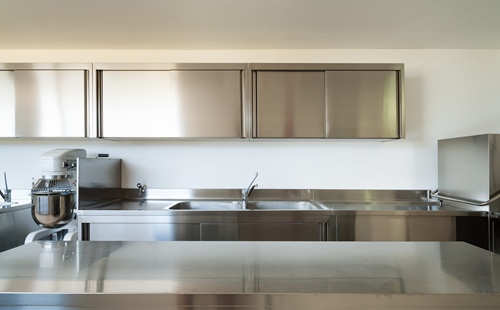In today’s modern kitchen, technology is becoming as important as style and function. One innovation that’s gained significant popularity is the touchless kitchen faucet—a hands-free fixture that turns on and off with a simple wave or motion. From promoting hygiene to offering convenience, touchless faucets are changing how homeowners interact with their sinks.
But as with any tech-forward feature, touchless kitchen faucets come with both benefits and limitations. Lets understand a balanced analysis of the pros and cons of touchless kitchen faucets, helping you make a smart choice for your home.

What Is a Touchless Kitchen Faucet?
A touchless kitchen faucet (also called a motion-sensor or hands-free faucet) uses infrared sensors or capacitive touch technology to detect movement. When your hand (or a dish, utensil, etc.) passes in front of the sensor, the faucet automatically turns the water on or off—eliminating the need for physical contact.
Most models are powered by batteries or AC adapters, and many still include manual handles for temperature and flow adjustments.
Pros of Touchless Kitchen Faucets
1. Promotes Hygiene and Reduces Germs
Perhaps the most celebrated benefit of touchless faucets is their ability to prevent cross-contamination. When your hands are dirty with raw meat, flour, or grease, there’s no need to touch the faucet handle. This minimizes the spread of bacteria and viruses—a major plus in any kitchen.
Fact Check: According to NSF International, faucet handles are among the top 10 germiest spots in kitchens. Touchless tech helps eliminate this issue.
2. Convenience and Ease of Use
Touchless faucets make everyday tasks more efficient. Whether you’re filling a pot, washing dishes, or rinsing vegetables, the motion-activated feature saves you time and effort.
Bonus: Perfect for people with arthritis, mobility issues, or limited dexterity, as it eliminates the need to grip or twist handles.
3. Water Conservation
By automatically shutting off when not in use, touchless faucets help conserve water. You won’t leave the tap running while scrubbing dishes or looking for a sponge—every second saved counts.
EPA Estimate: Touchless faucets can reduce water usage by up to 30%, especially in busy kitchens.
4. Sleek, Modern Aesthetic
With their minimalist designs and high-tech appeal, touchless faucets add a modern touch to any kitchen. They come in various styles, finishes, and configurations, including pull-down, pull-out, and commercial-style designs.
5. Hands-Free for Multitasking
When you’re juggling multiple tasks—holding a pot, wrangling a toddler, or dealing with a kitchen mess—a touchless faucet is incredibly helpful. Simply wave your hand or dish in front of the sensor, and water flows instantly.
Cons of Touchless Kitchen Faucets
1. Higher Initial Cost
Touchless faucets are significantly more expensive than traditional models. While basic manual faucets can start as low as ₹2,000–₹5,000 ($30–$70), quality touchless faucets usually range from ₹10,000 to ₹30,000 ($120–$400) or more, depending on features and brand.
Tip: Factor in potential installation fees, especially if electrical wiring is required.
2. Requires Power Source
Touchless faucets rely on batteries or AC power to function. This means:
- You may need to replace batteries every 6–12 months, depending on usage.
- Power outages can disrupt operation if the faucet isn’t dual-powered with a manual option.
Fact: Some faucets offer hybrid models that allow manual operation during power failure—a worthwhile feature to consider.
3. Sensor Sensitivity Issues
Sensors may misread movements or fail to detect your hand altogether. This can lead to:
- Water turning on/off unintentionally
- Delay in response
- Frustration during tasks that require precision
User Feedback: Incorrect placement of sensors or interference from shiny surfaces or lighting can cause erratic behavior.
4. More Complex Installation
Installing a touchless faucet may require technical expertise, especially if you’re dealing with:
- Electrical connections
- Replacing older plumbing
- Integrating with smart home systems
In many cases, professional installation is recommended, which adds to the total cost.
5. Maintenance and Repairs Can Be Tricky
Unlike mechanical faucets, touchless models contain electronics, solenoid valves, and sensors, all of which can malfunction. Troubleshooting may require:
- Resetting sensors
- Replacing components
- Contacting the manufacturer
Warning: Not all plumbers are familiar with electronic faucet systems, so repairs can be slower or costlier.
Touchless vs. Traditional Kitchen Faucets
| Feature | Touchless Faucet | Traditional Faucet |
| Hands-Free Operation | ✅ Yes | ❌ No |
| Hygiene & Cleanliness | ✅ High | ⚠️ Moderate |
| Water Efficiency | ✅ Excellent | ⚠️ Depends on user habits |
| Cost | ❌ High | ✅ Low |
| Power Required | ✅ Yes (battery/electric) | ❌ No |
| Ease of Installation | ❌ Moderate/Complex | ✅ Easy |
| Maintenance | ⚠️ Moderate/High | ✅ Low |
| Modern Look | ✅ Very Modern | ✅ Classic/Varied |
| Smart Home Integration | ✅ Available in models | ❌ Rare |
🛠️ Tips for Choosing the Best Touchless Kitchen Faucet
- Look for Manual Override – Ensure your faucet can be operated manually in case of power loss or sensor failure.
- Check the Power Source – Decide between battery-operated, plug-in, or hybrid models.
- Sensor Placement Matters – Models with multiple or adjustable sensors offer more flexibility and fewer false triggers.
- Pick a Trusted Brand – Brands like Moen, Kohler, Delta, and Grohe offer solid warranties and better sensor tech.
- Consider Finish and Design – Match your faucet with kitchen décor (e.g., matte black, brushed nickel, chrome).
🏁 Should You Buy a Touchless Kitchen Faucet?
✅ Yes, If You:
- Value hygiene, especially in busy family kitchens
- Want modern features in your smart kitchen setup
- Are looking to reduce water waste
- Enjoy the convenience of hands-free functionality
❌ Think Twice If You:
- Are on a tight budget
- Prefer simple, low-maintenance solutions
- Live in areas with frequent power outages
- Don’t want to deal with tech or sensor-related troubleshooting
Final Verdict
A touchless kitchen faucet offers more than just novelty—it’s a practical, stylish, and hygienic upgrade that suits the needs of modern households. While it does come with a higher price tag and potential for maintenance, the benefits in terms of convenience, cleanliness, and water conservation can far outweigh the downsides—especially for active kitchens.
Whether you’re remodeling your entire kitchen or simply upgrading a faucet, touchless models are worth considering—just be sure to select a reliable brand and understand the power and sensor requirements before you install.

